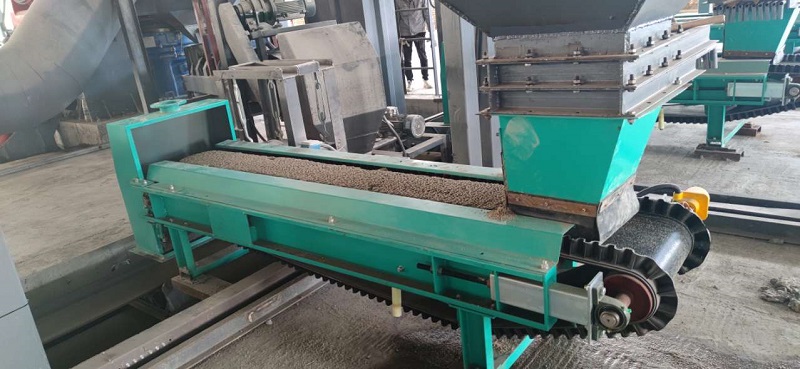
Common Faults and Solutions for Quantitative Feeders
In industrial production lines, quantitative feeders are widely used for dynamic measurement, conveyance, and feeding of bulk materials. They play a crucial role in enhancing production efficiency, reducing labor costs, and enabling transparent management of production data. Any fault in the quantitative feeder can easily lead to production halts and losses. To ensure smooth production, it's essential to keep the equipment in good working condition and promptly address any issues that arise.

Here are some common faults of quantitative feeders and their corresponding solutions:
1.Inability to Communicate with Upper Computer
·Possible Cause: Incorrect feeder address setting.
·Solution: Set the feeder parameter R22 to match the upper computer.
2.No Accumulated Pulse Output
·Possible Cause: Output pulse duration too long or too short.
·Solution: Adjust the pulse width appropriately.
3.Control System Failure to Start, No Indicator Light on the Instrument
·Possible Cause: Belt deviation.
·Solution: Switch to manual mode, adjust the tensioning device at the belt's tail to guide the belt back to position, and disengage the proximity switch.
4.No Belt Load Display
·Possible Cause: Issues with sensor connection or parameter settings.
·Solution: Check the feeder's weighing connection and parameter settings.
5.No Belt Speed Display
·Possible Cause: Encoder connection issues or incorrect parameter settings.
·Solution: Check electrical connections and parameter settings for abnormalities.
6.Instantaneous Flow Fluctuations During Initial Startup
·Possible Cause: Excessive PID control coefficient.
·Solution: Reduce the P control coefficient R02.
7.Control System Failure to Start, No Indicator Lights
·Possible Cause: Unconfirmed system fault.
·Solution: Confirm the fault via the feeder control cabinet or central control.
8.Control System Failure to Start, Belt Deviation Indicated on Rear Panel
·Possible Cause: Belt deviation.
·Solution: Switch to manual mode, adjust the tensioning device to guide the belt back to position, and disengage the proximity switch.
For faults that cannot be resolved, we recommend contacting the quantitative feeder manufacturer promptly for professional assistance to minimize production disruptions. [Company Name] provides comprehensive after-sales services, including phone support, remote assistance, and onsite services, to ensure equipment runs smoothly and production remains unaffected.
 The Application Superiority of the Unmanned Automatic Weighing Management System for Truck Scales
The Application Superiority of the Unmanned Automatic Weighing Management System for Truck Scales
 Unmanned Automatic Weighbridge System vs. Traditional Manual Weighbridge
Unmanned Automatic Weighbridge System vs. Traditional Manual Weighbridge
 System Composition and System Characteristics of Electronic Batching Belt Scales
System Composition and System Characteristics of Electronic Batching Belt Scales
 Why can the Guonuo ICS-14A Electronic Belt Scale be used as a belt scale for trade settlement?
Why can the Guonuo ICS-14A Electronic Belt Scale be used as a belt scale for trade settlement?
 Hardware Composition and Software Functions of Automated Batching Control Systems
Hardware Composition and Software Functions of Automated Batching Control Systems
 In which aspects can electronic explosion-proof belt scales better meet the weighing and metering needs of coal mines?
In which aspects can electronic explosion-proof belt scales better meet the weighing and metering needs of coal mines?
 What are the sources of error in the application of in-furnace coal belt weighers? How can they be resolved?
What are the sources of error in the application of in-furnace coal belt weighers? How can they be resolved?
 What brand of loader weighing electronic scale has good quality? How should one choose?
What brand of loader weighing electronic scale has good quality? How should one choose?
 How can mines achieve unmanned management of weighbridge weighing?
How can mines achieve unmanned management of weighbridge weighing?
